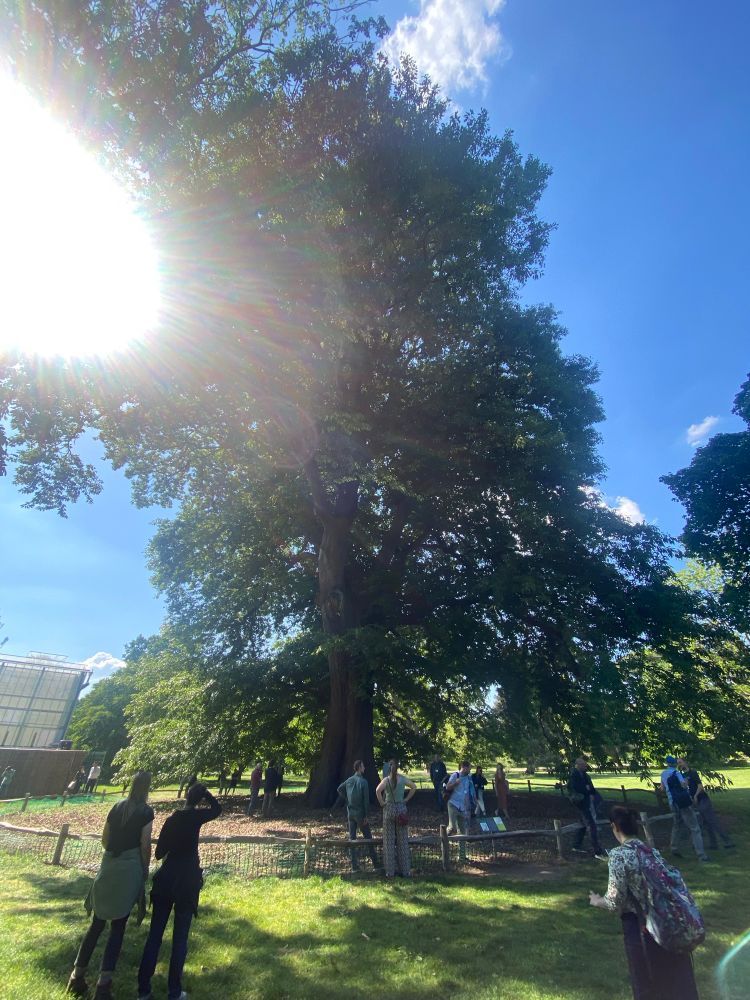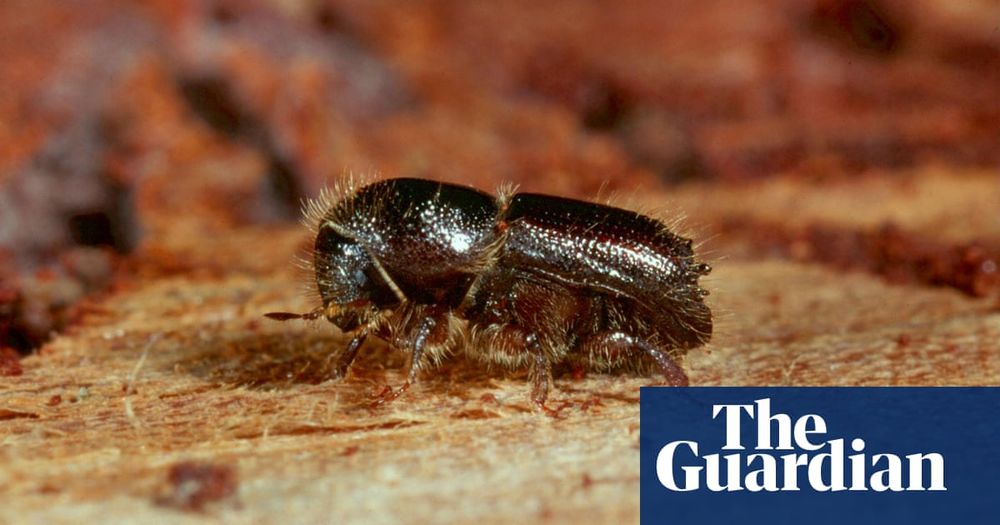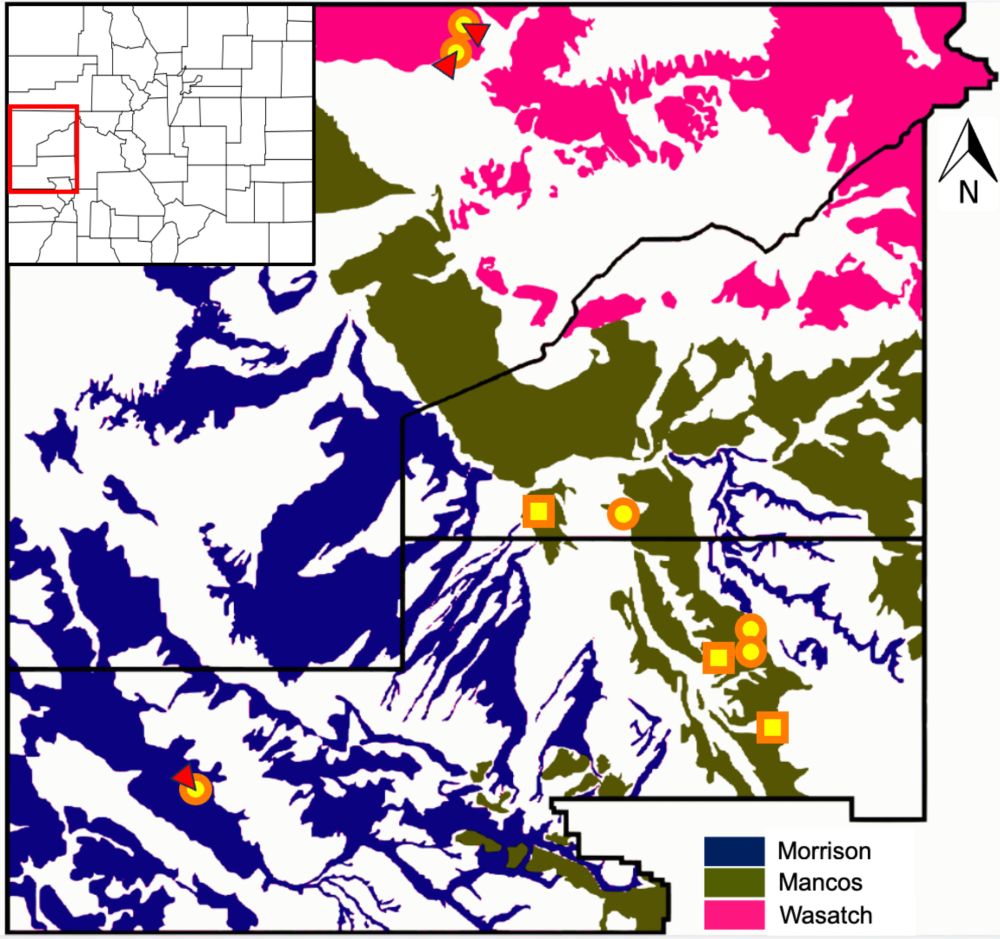Understanding VOC blends involved in AOD opens doors for early detection and semiochemical-based management of this complex decline syndrome.
#ChemicalEcology #TreeHealth #Microbiology
@rothamsted.bsky.social @forestresearchuk.bsky.social @jamesemcdonald.bsky.social @drcarriebrady.bsky.social
01.12.2025 09:13 — 👍 2 🔁 0 💬 0 📌 0
Key results:
• Foliage of AOD-symptomatic trees emits characteristic VOCs
• Virgin female Agrilus biguttatus prefer the odor of symptomatic foliage
• AOD-associated bacteria in necrotic lesions emit newly characterized VOCs
• Gravid females orient toward a blend of bacterial + bark VOCs
01.12.2025 09:13 — 👍 1 🔁 0 💬 1 📌 0
Synthetic VOCs from T. hamatum—especially 1-octen-3-one—were strongly antifungal, arresting growth of crop pathogens like Botrytis cinerea and Gaeumannomyces tritici. Findings support the use of VOCs as tools for pathogen management in sustainable agriculture.
#ChemicalEcology #Semiochemicals
09.07.2025 11:31 — 👍 1 🔁 0 💬 0 📌 0
In confrontation assays, T. hamatum GD12 suppressed the fungal pathogen Sclerotinia sclerotiorum. Volatile collections from the assays, followed by GC and GC-MS analysis, revealed that several T. hamatum VOCs were induced during confrontation, supporting a VOC-mediated mechanism
09.07.2025 11:31 — 👍 1 🔁 0 💬 1 📌 0
Inducible volatile chemical signalling drives antifungal activity of Trichoderma hamatum GD12 during confrontation with the pathogen Sclerotinia sclerotiorum
BACKGROUND: The use of beneficial soil fungi or their natural products offers a more sustainable alternative to synthetic fungicides for pathogen management in crops. Volatile organic compounds (VOCs) produced by such fungi act as semiochemicals that inhibit pathogens, with VOC production influenced by physical interactions between competing fungi. This study explores the interaction between the beneficial soil fungus Trichoderma hamatum GD12 strain (GD12), previously shown to antagonize crop pathogens such as Sclerotinia sclerotiorum, to test the hypothesis that its antagonistic effect is mediated by volatile chemical signalling. A GD12 mutant deficient in the chitinolytic enzyme N-acetyl-β-glucosaminidase ΔThnag::hph, which shows reduced biocontrol activity, was also examined. RESULTS: In dual-culture confrontation assays, co-inoculation of GD12 and S. sclerotiorum led to fungistatic interactions after 7 days, whereas ΔThnag::hph showed no antagonism, indicating a loss of antagonistic function. VOCs collected from individual and co-cultures were analysed by gas chromatography - flame ionization detector (GC-FID) analysis and coupled GC-mass spectrometry (GC-MS), revealing significant differences in VOC production between treatments, with VOC production notably upregulated in the GD12 + S. sclerotiorum co-culture. Peak production of 6-pentyl-2H-pyran-2-one occurred 17 days post-inoculation. This upregulation was absent in the ΔThnag::hph co-culture, suggesting VOCs may drive antagonism. Synthetic VOC assays revealed several compounds inhibitory to S. sclerotiorum, including 1-octen-3-one, which also arrested the growth of key fungal pathogens (Botrytis cinerea, Pyrenopeziza brassicae, and Gaeumannomyces tritici). Structural insights into 1-octen-3-one's antifungal activity against S. sclerotiorum are also presented. CONCLUSIONS: These findings support the hypothesis that the antagonistic properties of T. hamatum GD12 against crop fungal pathogens can, in part, be attributed to VOC production. Further research is needed to assess the potential of these semiochemicals as tools for pathogen management in agriculture. ### Competing Interest Statement The authors have declared no competing interest. Biotechnology and Biological Sciences Research Council, https://ror.org/00cwqg982, BB/X010953/1, BBS/E/RH/230003A, BBS/OS/CP/000001, 1622285
🚨New pre-print: we show that the beneficial soil fungus Trichoderma hamatum GD12 uses volatile organic compounds (VOCs) to suppress crop pathogens. Link to the study here:
www.biorxiv.org/content/10.1...
09.07.2025 11:31 — 👍 1 🔁 1 💬 1 📌 0
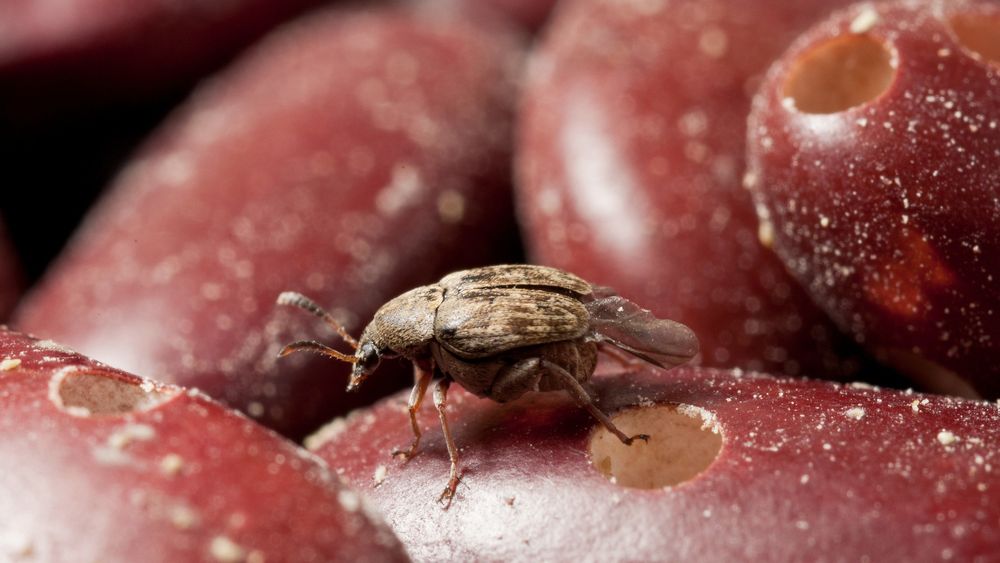
📢New Paper! Identifying subtle differences in the molecular structure of a sex pheromone could ultimately help protect vital stored legume crops from the destructive dried bean beetle. 🫘🪲 @royentsoc.bsky.social
Full story 👇
www.rothamsted.ac.uk/news/bean-be...
09.04.2025 10:27 — 👍 3 🔁 1 💬 1 📌 0
Great to be involved with this study- we show that the eight-toothed spruce bark beetle (Ips typographus) can identify and colonize both Sitka and Norway spruce trees, providing insights for the management of the forest pest #ChemicalEcology #PestManagement
13.02.2025 08:35 — 👍 2 🔁 0 💬 0 📌 0
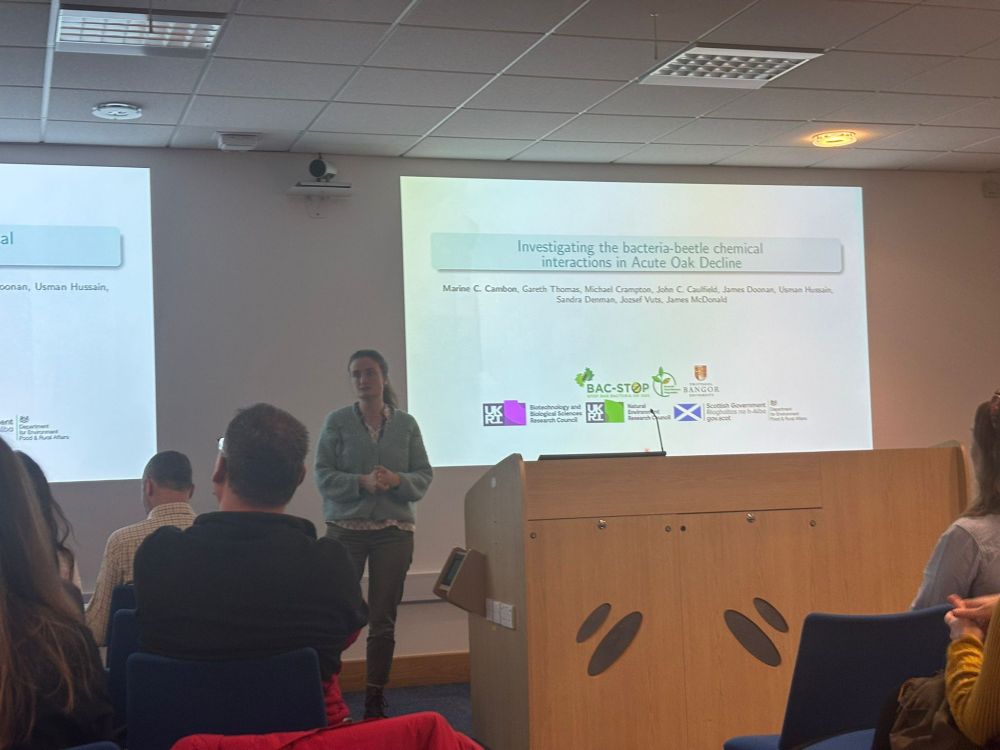
It's so nice being back at #MMEG2024 in Southampton finally presenting the results of our study in insect-bacteria interactions @jamesemcdonald.bsky.social @gathomas12.bsky.social
16.12.2024 22:37 — 👍 10 🔁 7 💬 0 📌 0

Using dynamic headspace collections for bacterial volatile sampling
This protocol describes a step-by-step guide for sampling Volatile Organic Compounds (VOCs) from the headspace of bacterial cultures, using dynamic headspace collections.
A new protocol from the Chemical Ecology group @rothamsted.bsky.social has now been published on @protocolsio.bsky.social: 'Using dynamic headspace collections for bacterial volatile sampling'.
Link: www.protocols.io/view/using-d...
#ChemicalEcology #Microbiology #Volatiles #Semiochemicals
04.12.2024 18:59 — 👍 4 🔁 3 💬 0 📌 0
Hi #ChemicalEcologists,
Just created a starter package for networking people in our field 😆 Please let me know if people need to be added!
go.bsky.app/KzwBnhN
01.12.2024 15:13 — 👍 19 🔁 12 💬 12 📌 0

I'm excited to announce a PhD studentship, based at UofYork, exploring how land management in African savanna affects climate, past and present. I'm joined by the fabulous
Prof Colin Beale & @sabineclarke.bsky.social
to join historic delivery of ecosystem functions with future savanna management.
28.11.2024 21:30 — 👍 20 🔁 9 💬 1 📌 2
"Unlock Nature's Potential" Join @drjohnphreade.bsky.social, @ipmtom.bsky.social, @randybenjamin.bsky.social and me for a funded #PhD at HAU!
Optimise plant essential oil biopesticides for integrated pest management.
More info: warwick.ac.uk/fac/cross_fa...
#Sustainability #AgTech #EcoFriendly
30.10.2023 17:47 — 👍 4 🔁 5 💬 0 📌 0

Fully-funded PhD position with Gareth Thomas @rothamsted.bsky.social and myself on entomopathogenic fungi and pest-host-parasitoid interactions 🌽
DEADLINE 11 December
Apply here 👉
www.swbio.ac.uk/programme/ho...
19.11.2024 11:04 — 👍 8 🔁 10 💬 0 📌 0
Professor Emeritus (University of Manchester), writes on biology, history of science & French Resistance. Biography of Francis Crick, out in Nov 2025.
Link to publications: https://orcid.org/0000-0002-8258-4913
Ecologist studying interactions between birds, insects and plants, and bird migration. Now working as a Development Specialist at University of Turku. Opinions are my own.
Professor of Microbiome Ecology at Institute of Biology, Leiden University
Bacillus subtilis, biofilms, plant microbiome, bacteria-fungi interactions and circadian clock within @microclockerc.bsky.social #ERCSyG
https://linktr.ee/atkovacs
Pok Man Leung 梁博聞 | Microbiologist | BSc @hkust | Ph.D @MonashBDI | ARC DECRA Fellow and Group Leader @MonashUni
MRes Student at the Hawkesbury Institute for the Environment, WSU| mycorrhizal fungi | ecology | plant–microbe interactions 🌱🦠|
🌐 https://www.frewlab.com/team
Professor @UniversiteLiege & GHU manager @BiovIntCIAT_eng
Plant pathologist focusing in diagnostics, plant viruses and microbiome.
Scientific journal publishing research, overview and commentary across all of biology. All of it!
https://www.cell.com/current-biology/home
Part of CellPress @cellpress.bsky.social
Working on #SelfDrivingLabs at the Acceleration Consortium @ UofT. Former employee at dsm-firmenich working on self-driving labs for food applications. Interested in systems biology, microbial communities, ML/AI, software development, product management.
Scientific collaborator @ Swiss forest protection WSL
Plant Pathologist; interested in molecular plant-microbe interactions and plant disease epidemiology. RTs are not necessarily endorsements. Private account. Homepage @TUM: https://www.mls.ls.tum.de/en/pp/
#PlantBiotech👨🔬| #Postdoc research fellow | Trying to understand how plants respond/adapt to #abiotic stress conditions🌡️❄️💦🫧🌫 | Open for #collaboration | 😍→🏏✍🏻🥘🍔🥗🍲🍦☕️ | 𝕏 @Ale_Raza6
Interested in plant-plant and plant-human relationships; monster studies; museum, garden, and library collections; climate change and cities.
Brazilian. She/Ela
https://www.luizateixeira-costa.com/
📚 🌱 🌈
PhD from UF, plant immunity, citrus HLB, canker, CRISPR
Research agency for the Forestry Commission.
Scientific services to support sustainable forestry.
It's all about plants in the end
(and truffle diversity | soil carbon)
she/her 🏳️🌈 🌾🍄👩🏼🔬⛰️🌱
#WomenInSTEM #botany #fungi #seeds
PhD from UOregon 🇺🇸
Postdoc at the Australian National Uni 🇦🇺
#MSCA postdoc UiBergen '26 🇳🇴
HilaryRoseDawson.wordpress.com
Bacterial taxonomist and microbiologist. Interested in forest pathogens, microbiomes and all things tree!
Science X provides daily science news on research developments, technological breakthroughs and the latest science innovations.
Phys. org: https://phys.org/
Medical Xpress: https://medicalxpress.com/
Tech Xplore: https://techxplore.com/
Professor of Creative Pedagogies | Poet | Game Designer | Slow AI
#SciComm #HigherEd #Poetry #GenAI
https://theslowai.substack.com/
https://linktr.ee/sam.illingworth
Molecular microbial ecology & beneficial microbiomes & plant-microbe interactions. PhD & current postdoc at University of Copenhagen. Swim bike run


